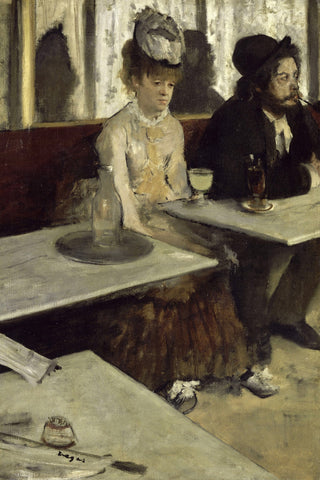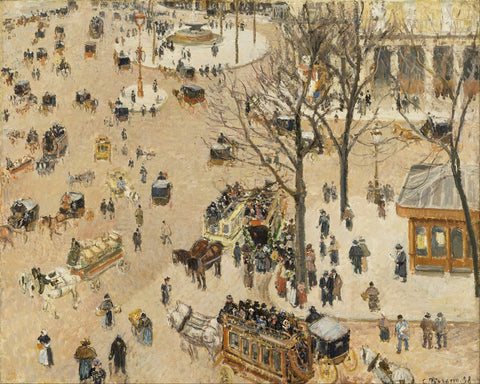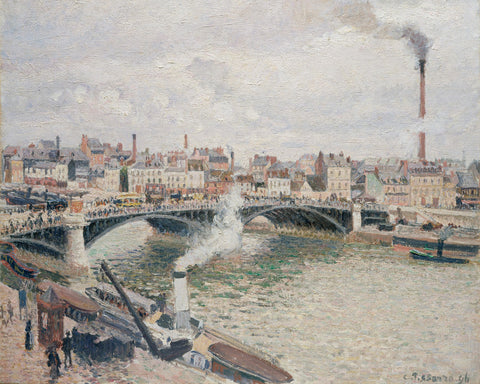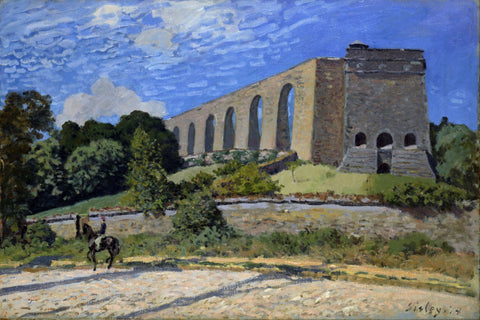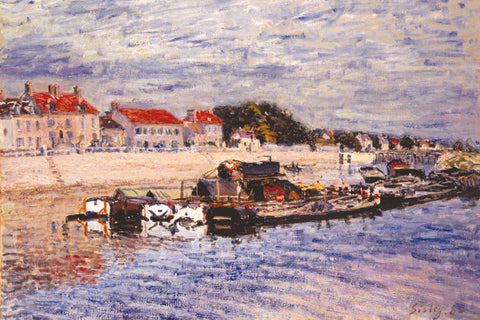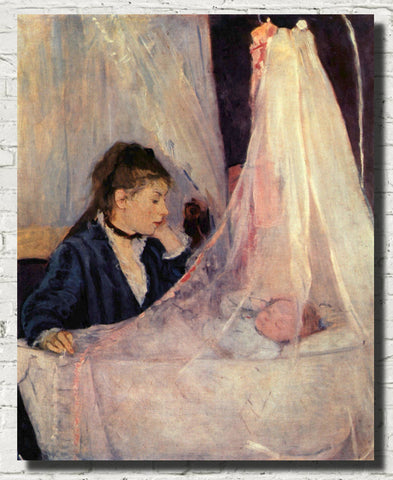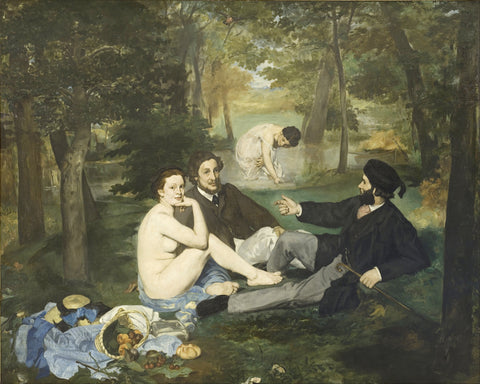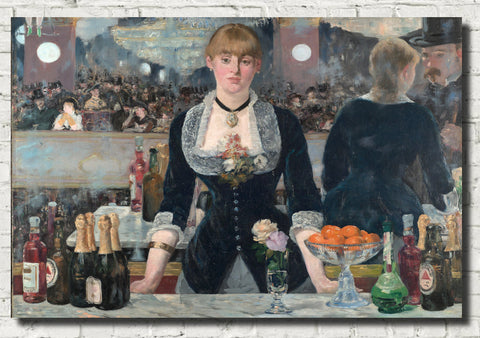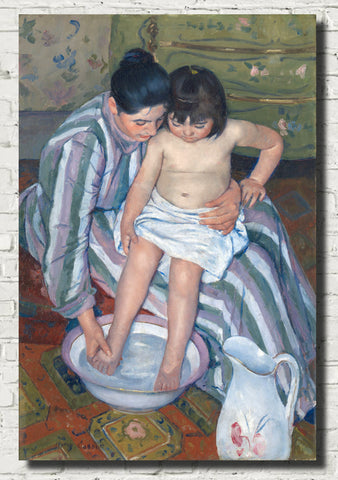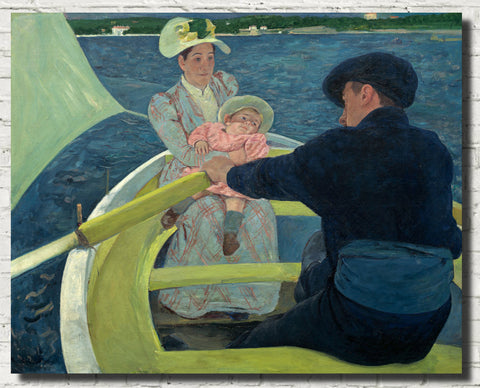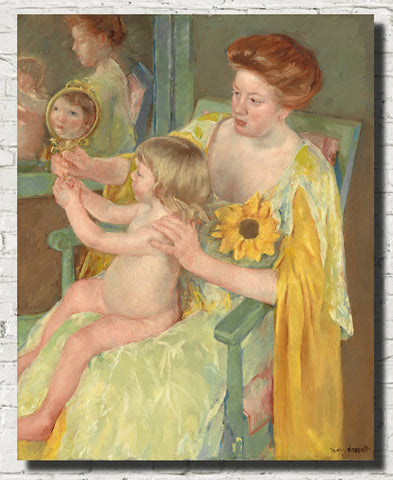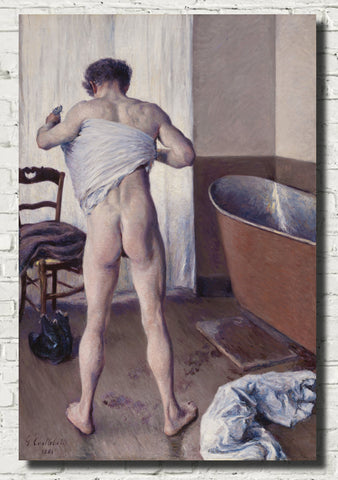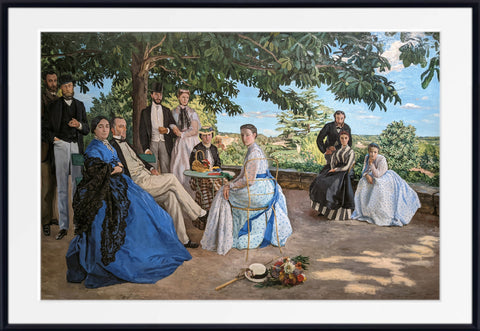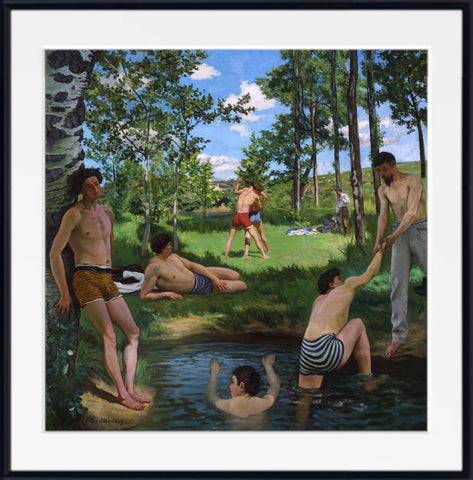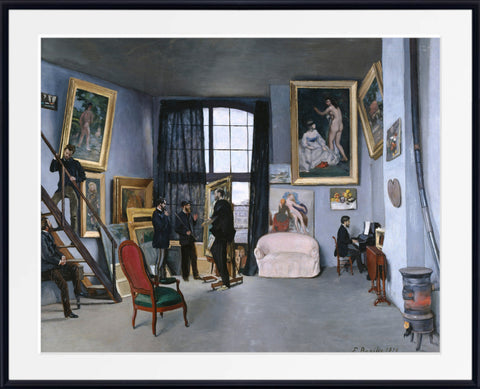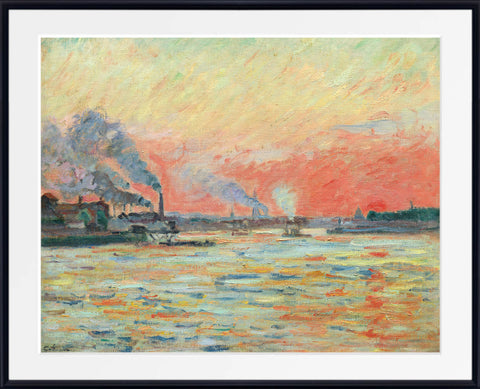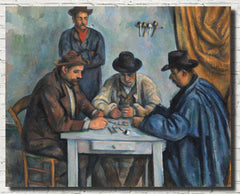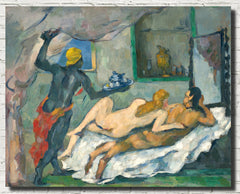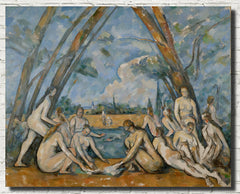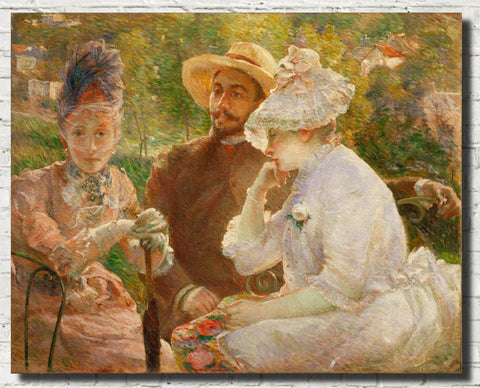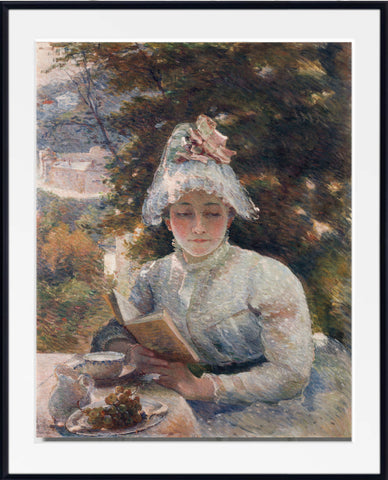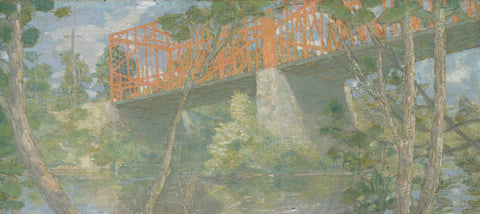Table of Contents:[hide]
Introduction
The Impressionist movement, which emerged in the late 19th century in France, marked a revolutionary departure from traditional artistic norms. Characterized by a focus on capturing the fleeting effects of light and color, the Impressionists sought to convey the immediacy and essence of a scene rather than rendering it with meticulous detail. This innovative approach to painting had a profound impact on the art world and laid the groundwork for subsequent modern art movements.
Prominent figures among the Impressionist painters include Claude Monet, often regarded as the father of Impressionism. Monet's iconic Water Lilies series and his depictions of Rouen Cathedral showcase his mastery in capturing the ever-changing play of light. Edgar Degas, known for his scenes of ballet dancers and horse races, brought a unique perspective to the movement with his dynamic compositions and unconventional viewpoints.
Another luminary of the Impressionist movement was Pierre-Auguste Renoir, celebrated for his enchanting portrayals of everyday life. His paintings, such as "Luncheon of the Boating Party," exude a sense of joie de vivre and exemplify the movement's emphasis on capturing the momentary.
Berthe Morisot, a trailblazing female artist, made significant contributions to Impressionism, depicting domestic scenes and leisure activities with a delicate touch. Mary Cassatt, an American expatriate, also played a crucial role in the movement, particularly in her tender portrayals of mothers and children.
The Impressionists faced initial resistance and criticism from the traditional art establishment, which deemed their techniques unconventional. However, as time progressed, their works gained acceptance and recognition for their groundbreaking contributions to art.
The following list of the major impressionist painters links to individual articles which give an in-depth view of each artist along with links to their most popular works which are available as fine art prints and canvas panels.
1. Claude Monet:
Claude Monet was one of the founders and most prolific practitioners of French Impressionism during the late 19th century. Seeking to capture transient effects of color, light, and atmosphere in nature, Monet perfected the technique of painting outdoors in natural light en plein air. He strove to recreate his first impressions of a scene on canvas quickly, often revisiting the same subjects like haystacks, poplars, or Rouen Cathedral in different lighting, seasons, and perspectives. Monet is most recognized for his Water Lilies, expansive series focused on the tranquility and reflective qualities of his flower garden at Giverny which he painted into his later years while struggling with failing eyesight. The loose handling of paint and attempt to structure compositions around the main sensation or impression of that moment became hallmarks of his work that greatly influenced emerging avant-garde approaches.
Claude Monet - Famous Paintings
2. Pierre-Auguste Renoir:
Pierre-Auguste Renoir was one of the central artists of the Impressionist movement celebrated for depicting modern Parisian leisure activities and female beauty using vibrant palettes and softly modeled forms. Greatly inspired by 18th century masters like Boucher and Fragonard, Renoir captured the joie de vivre of Parisian middle class entertainment from intimate luncheons to boisterous dances populated by ruddy-cheeked mothers, children, and romantic couples. As he matured, Renoir moved away from directly Impressionistic works toward timeless portraits, many featuring his favorite model Aline Charigot who later became his wife. Continually inspired by themes of maternity, intimacy, and domestic joy, Renoir created universally beloved paintings praised for their virtuoso brushwork and shimmering light effects juxtaposed with human-scaled scenes of daily life. Despite suffering paralysis later in life, he continued to paint by strapping brushes to his hands.
Pierre-Auguste Renoir - Famous Paintings

- Luncheon of the Boating Party
3. Edgar Degas:
Edgar Degas was a seminal figure in the development of the Impressionist style though he rejected the term in association with his work, preferring to be called a realist. From depictions of ballet dancers rehearsing to women bathing, Degas took mundane scenes of contemporary Parisian life and imbued them with psychological tension through his compositional choices. He pioneered asymmetrical framing, radical cropping, and unusual vantage points in his paintings and pastels. His sculptural talents were also prodigious though not fully recognized until later in the 20th century. Above all, Degas exhibited technical mastery in representing effects of motion, tension, and psychological detachment within carefully planned compositions. Though often overshadowed by colleagues like Monet and Renoir during his life, Degas left an indelible mark on avant-garde approaches emerging in his wake.
Edgar degas - Famous Paintings

- The Tub
4. Camille Pissarro:
Camille Pissarro was the only artist to exhibit in all eight Impressionist shows, earning him acclaim as the "father of Impressionism" for his pivotal role binding the group aesthetically and philosophically. Initially influenced by Corot, Pissarro painted poetic rural landscapes infused with figural staffage inspired by Millet depicting peasants at work in the fields. As he matured professionally, Pissarro developed a highly systematic painting technique evidenced by stippled brushwork applied in complementary colors to create vivid visual harmonies. With his paintings of quaint country towns and graphical Paris cityscapes, Pissarro demonstrated that the transformative effects of light and atmosphere which define Impressionism could be attained while still respecting traditional painting structure and composition. His contributions were not merely artistic but intellectual and moral, as he mentored iconic figures like Cézanne, Gauguin, and Van Gogh on their paths toward individual mastery.
Camille Pissarro - Famous Paintings
- La Place due Théâtre Français
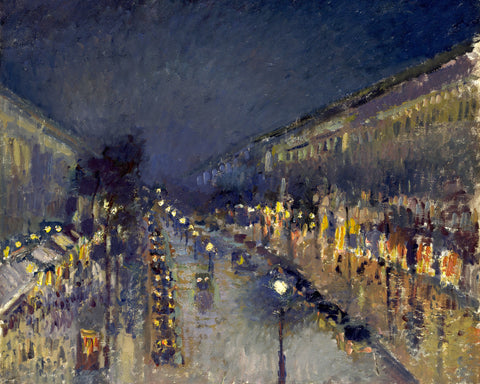
- Boulevard Montmartre at Night
5. Alfred Sisley:
Alfred Sisley stands among the great landscape painters of the 19th century for his dedication to translating the fluidity of nature and the ever-shifting qualities of light through loose brushwork applied en plein air. Unlike contemporaries, Sisley focused his full energy on landscape painting rather than dividing efforts between figures, portraits or still lifes. Though often overshadowed by Monet and Pissarro during his lifetime, Sisley produced masterful snow scenes conveying crystalline air and floods communicating nature's fugitive drama through expert handling of color. Preferring to paint lesser-known spots on the fringes of Paris rather than renowned locales, Sisley found profound beauty and consequence in humble subjects. Financial struggles plagued Sisley until his death, but recent revivals of interest have solidified his reputation as one of Impressionism's purest interpreters of nature and landscape's potency.
Alfred Sisley - Famous Paintings
6. Berthe Morisot:
Berthe Morisot was one of the foundational artists of French Impressionism and a guiding spirit of avant-garde sensibilities despite receiving less recognition than her male counterparts. Working within domestic interiors, Morisot forged an iconography of bourgeois femininity conveying the restrictions of women’s roles but also the intimacy of their relationships. Her innovative compositions with asymmetrical cropping, monochromatic palettes, and expressive brushwork captured the immediacy of lived experience within private, contemplative moments of contemporary womanhood – a close and nuanced perspective largely unseen among the public exterior subjects favored by the broader Impressionist circle. Though appreciated in her time primarily in relation to Manet and later married to his brother Eugene, Morisot’s talents and vision exceeded perceived decorous limitations, leaving enduring marks on avant-garde approaches related to feminism, abstraction, and capturing subjective interiority.
Berthe Morisot - Famous Paintings
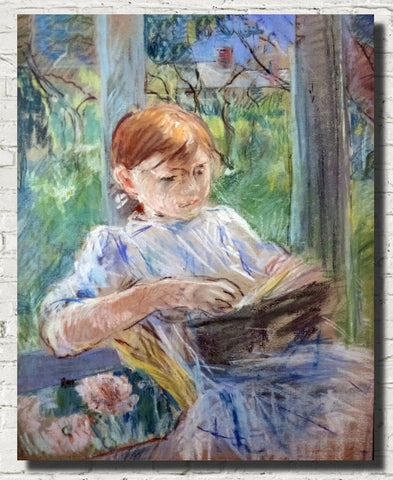
- Reading
7. Édouard Manet:
Édouard Manet was the maverick painter who Bridged the gap between Realism and Impressionism in 19th century French avant-garde art. Though his style was uniquely his own, Manet was a key influence on later Impressionists like Monet and Renoir and post-Impressionist Cézanne. His provocative modern subjects like urban leisure activities, candid portraits, and still life arrangements were conveyed through a disciplined approach merging precise draftsmanship with loose, alla prima handling of paint. Works like Luncheon on the Grass and Olympia caused great controversy for their unapologetic frankness and rejection of academic ideals. Manet maintained independence from the Impressionist collective despite exhibiting with them, but shared their desire to capture contemporary life through an unfiltered lens. Though underappreciated for much of his brief career, Manet is now viewed as an essential pivot between tradition and modernity.
Édouard Manet - Famous Paintings

- Olympia
8. Mary Cassatt:
Mary Cassatt was an American expat painter and printmaker who immortalized the tender bonds between mothers and children. Initially struggling to overcome biases against female artists to be accepted by the Parisian avant-garde, Cassatt later exhibited alongside the Impressionists and shared their interest in modern life. However, she uniquely captured the subjectivity of lived experience through images of domestic intimacy infused with depth of emotion. Works like The Child's Bath convey quiet moments of absorption and gentle caregiving within the refined interiors of upper-class homes. Preferring the medium of pastel for its speed and softness, Cassatt deftly evoked the fleeting world of childhood while also expanding the Impressionists' repertoire of subjects, techniques and capacity to arouse empathy regarding women’s restricted societal roles at the time.
Mary Cassatt - Famous Paintings
9. Gustave Caillebotte:
In addition to his own painting, Gustave Caillebotte was an essential patron who helped organize and underwrite some of the eight foundational Impressionist exhibitions between 1874 and 1886. Though later overshadowed by his Impressionist colleagues, Caillebotte’s paintings stand as incisive depictions of contemporary Parisian life through their bold perspectives and focus on middle class leisure activities like boating, conversation, and relaxation. Works like The Floor Scrapers and Paris Street, Rainy Day exhibit his interest in unusual, plunging angles of vision and asymmetrical framing devices lending them a distinctly modern dynamism. Caillebotte straddled the line between academic training grounded in full modeling and the avant-garde’s fascination with optical color effects created through broken brushwork, making him an apt bridge between tradition and Impressionism’s emerging innovative spirit.
Gustave Caillebote - Famous Paintings
10. Frédéric Bazille:
Frédéric Bazille forged close bonds with Monet, Renoir, and Sisley in the early stages of French Impressionism, before dying tragically in the Franco-Prussian War at age 29. Though his career was brief, Bazille produced innovative paintings Situated between Realism and nascent Impressionism through his adept plein air handling of landscape and figure subjects. Works like Family Reunion showcase Bazille’s ability to construct coherent multi-figure compositions with mosaic-like brushwork communicating dappled light filtered through foliage. Similarly Summer Scene captures the immediacy of working in natural outdoor light. Along with mentorship from Camille Pissarro, Bazille played a meaningful supportive role during Impressionism’s genesis before the movement achieved renown.
Frédéric Bazille - Famous Paintings
11. Armand Guillaumin:
Originally from an unassuming background as a barge pilot, Armand Guillaumin discovered a profound gift for painting outdoor vistas conveying atmospherics through vivid hues applied in thick impasto. Works like Moulins de la Galette situate visual drama in unpretentious everyday locations around central Paris, granting them historical resonance. Guillaumin favored working series, returning frequently to explore subtle differences in sites like Crozant or capturing rare urban winter views. Though less celebrated today, during his own era Guillaumin’s balancing of tradition and innovation epitomized the core Impressionist obsession with optical effects and the imprint of immediate sensory experience recorded spontaneously on canvas.
Armand Guillaumin - Famous Paintings

- La Tour Eiffel à Paris (circa 1900)

- Le Pont De Sully, Paris (circa 1886)
12. Paul Cézanne:
Now considered an essential post-Impressionist pioneer leading toward Cubism and modern art, Paul Cézanne actually exhibited in the first Impressionist shows in 1874 and 1877. However Cézanne marched to the beat of his own drum. His shifting affections between Impressionism’s precepts and Classical structures underpinned by geometry make Cézanne an unusual transitional figure. Still life subjects allowed exploration of theory through layered paint conveying volumetric heft. Increasingly this gave way to simplified landscapes like scenes of Mont Sainte-Victoire painted repeatedly from differing angles. Cézanne both learned from Impressionist luminaries Pissarro and Renoir while formulating an intensely personal vision that profoundly impacted Matisse and Picasso to guide modernism’s future direction.
Paul Cézanne - Famous Paintings
13. Eva Gonzalès:
Initially mentored by avant-garde master Édouard Manet, Eva Gonzalès assimilated influences from the nascent Impressionism blooming around her to become an accomplished belle époque painter in her own right who championed modern femininity. With works like En Plein Soleil (In Open Air) demonstrating her handling of techniques like using brisk brushwork to capture dappled light in outdoor scenes. Her untimely death from childbirth complications truncated a career traversing fine portraiture and lyrical landscapes. Through leadership activities promoting acceptance of women artists, Gonzalès exemplified the gradual early shift toward acknowledging creative talents regardless of gender.
Eva Gonzalès - Famous Paintings
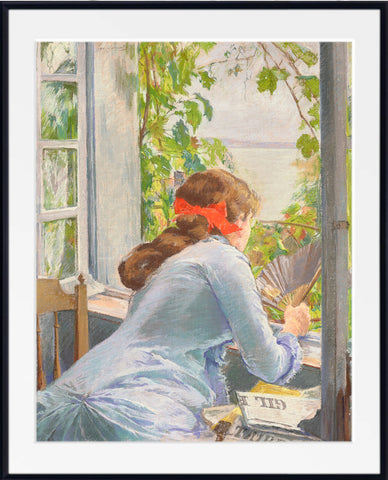
- Au bord de la mer (Honfleur)

- Loge at the Théâtre des Italiens
14. Marie Bracquemond
Marie Bracquemond, born in 1840, wove a tapestry of innovation in the Impressionist movement. Her versatile brush, influenced by luminaries like Monet, created timeless masterpieces like "On the Terrace at Sèvres."
Marie Bracquemond - Famous Paintings
SUMMARY
The legacy of the Impressionist painters extends far beyond their lifetime. Their revolutionary approach to color, light, and technique paved the way for subsequent movements such as Post-Impressionism and Fauvism. Today, the works of Monet, Degas, Renoir, Morisot, and others continue to captivate audiences worldwide, embodying the enduring allure and innovation of the Impressionist movement.


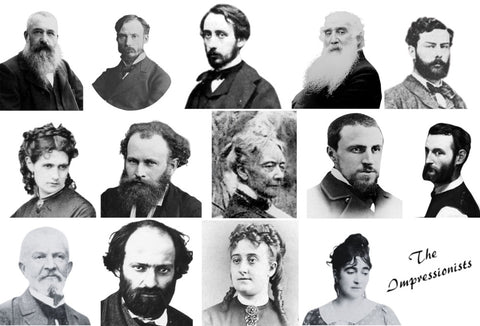
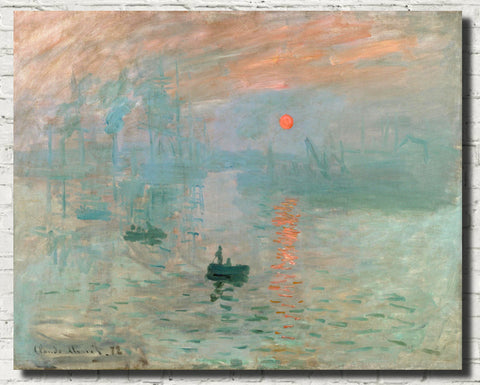
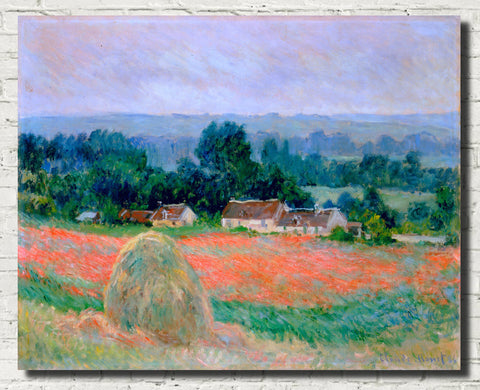
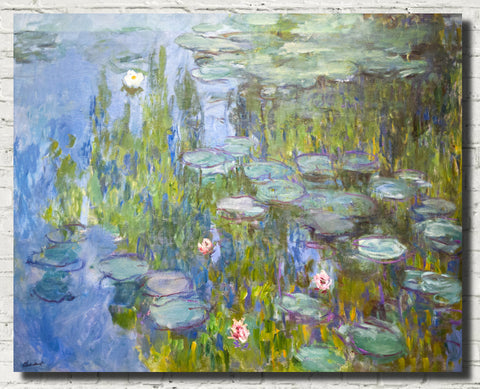
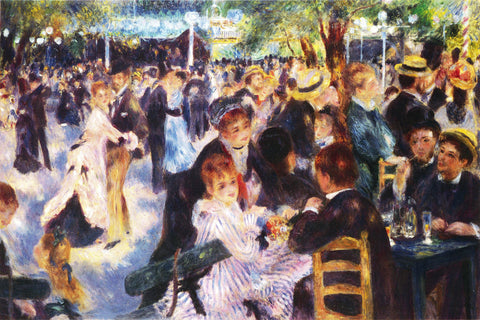 - Bal du moulin de la Galette
- Bal du moulin de la Galette

